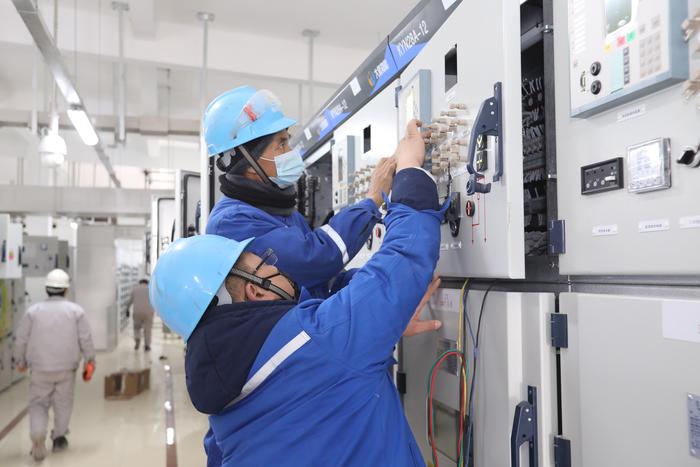|
| 2021-01-20 来源: 中国石化新闻网 |
| 石化新闻 |
|
中国石化新闻网讯 据全球能源新闻网1月16日报道,美国能源信息署(EIA)在其《2020年1月的短期能源展望》中预测,到2021年,美国原油年平均产量将达到1110万桶/天,比2020年减少20万桶/天,由于低油价导致钻井活动减少。如果2021年的产量下降,将标志着产量连续第二年下降。应对新冠疫情的措施导致供应和需求中断。EIA预计2022年原油日产量将增加40万桶,这是由于随着价格保持或接近每桶50美元而增加了钻井量。 美国天然气产量在2018年和2019年创纪录,主要是因为页岩和致密油地层的钻井增加。产量的增加导致了天然气储量的增加和天然气价格的下降。2020年,由于应对新冠疫情,天然气销量比2019年下降了2%。据EIA估计,2021年,美国市场天然气年产量将进一步下降2%,至日均959亿立方英尺。EIA预计,到2022年,美国天然气产量将上升2%,至976亿立方英尺/天。 EIA对原油产量的预测分为三个地区:不包括联邦墨西哥湾(GOM)的48个州(占2019年原油产量的81%)、墨西哥湾(15%)和阿拉斯加(4%)。EIA预计,2021年第一季度美国48个州的原油产量将下降,然后在预测期内的剩余时间内会上升。随着2021年晚些时候更多的新油井上线,新油井产量将超过传统油井下降的量,推动2021年第一季度后总体原油产量的增加。 由于西德克萨斯中质原油价格下降,以及2021年第一季度钻井活动减少,二叠纪盆地石油导向井的伴生天然气产量将下降。阿巴拉契亚等干旱地区的天然气产量取决于亨利枢纽中心(Henry Hub)的价格。EIA预测亨利中心的价格将从2020年的2.00美元/百万英热单位上升到2021年的3.01美元/百万英热单位,到2022年上升到3.27美元/百万英热单位,这可能会促进阿巴拉契亚地区天然气产量的增加。然而,如果Mountain Valley pipeline (MVP)延期,2021年阿巴拉契亚地区的天然气生产可能会受到管道限制。MVP计划于2021年年底投入使用,将天然气从西弗吉尼亚州西北部的产区输送到弗吉尼亚州南部。 自2020年中期大西洋海岸管道被取消以来,该地区的天然气接收能力正在迅速恢复。 郝芬 译自 全球能源新闻网 原文如下: FALL AND RISE OF THE US OIL AND NATURAL GAS PRODUCTION In its January 2020 Short-Term Energy Outlook, the U.S. Energy Information Administration (EIA) forecasts that annual U.S. crude oil production will average 11.1 million b/d in 2021, down 0.2 million b/d from 2020 as result of a decline in drilling activity related to low oil prices. A production decline in 2021 would mark the second consecutive year of production declines. Responses to the COVID-19 pandemic led to supply and demand disruptions. EIA expects crude oil production to increase in 2022 by 0.4 million b/d because of increased drilling as prices remain at or near $50 per barrel (b). The United States set annual natural gas production records in 2018 and 2019, largely because of increased drilling in shale and tight oil formations. The increase in production led to higher volumes of natural gas in storage and a decrease in natural gas prices. In 2020, marketed natural gas production fell by 2% from 2019 levels amid responses to COVID-19. EIA estimates that annual U.S. marketed natural gas production will decline another 2% to average 95.9 billion cubic feet per day (Bcf/d) in 2021. The fall in production will reverse in 2022, when EIA estimates that natural gas production will rise by 2% to 97.6 Bcf/d. EIA’s forecast for crude oil production is separated into three regions: the Lower 48 states excluding the Federal Gulf of Mexico (GOM) (81% of 2019 crude oil production), the GOM (15%), and Alaska (4%). EIA expects crude oil production in the U.S. Lower 48 states to decline through the first quarter of 2021 and then increase through the rest of the forecast period. As more new wells come online later in 2021, new well production will exceed the decline in legacy wells, driving the increase in overall crude oil production after the first quarter of 2021. Associated natural gas production from oil-directed wells in the Permian Basin will fall because of lower West Texas Intermediate crude oil prices and reduced drilling activity in the first quarter of 2021. Natural gas production from dry regions such as Appalachia depends on the Henry Hub price. EIA forecasts the Henry Hub price will increase from $2.00 per million British thermal units (MMBtu) in 2020 to $3.01/MMBtu in 2021 and to $3.27/MMBtu in 2022, which will likely prompt an increase in Appalachia’s natural gas production. However, natural gas production in Appalachia may be limited by pipeline constraints in 2021 if the Mountain Valley Pipeline (MVP) is delayed. The MVP is scheduled to enter service in late 2021, delivering natural gas from producing regions in northwestern West Virginia to southern Virginia. Natural gas takeaway capacity in the region is quickly filling up since the Atlantic Coast Pipeline was canceled in mid-2020. |








